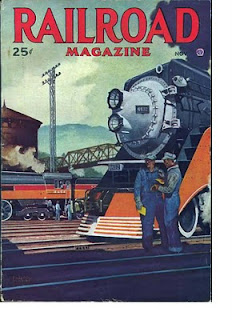Well...that depends...
 Which type of cancellation are we talking about? Corporate cancellation or paper cancellation? The two are different.
Which type of cancellation are we talking about? Corporate cancellation or paper cancellation? The two are different.Collectors in practically every field ascribe higher values to items that are intact. The less intact, the lower the value. In our hobby, collectors desire fully intact, fully issued certificates. Ideally, collectors want certificates to look like they did on the day they were issued.
(Shown is a Wagner Palace Car certificate cancelled four ways: handwritten, rubber-stamp, circular punches and punches shaped like the letter 'P'.)
Collectors recognize many different types of cancellation. Certificates are often stamped with a rubber-stamp impression that says, "Cancelled." Many certificates were cancelled with punches that spelled out the word "Cancelled" with tiny holes. Older certificates often display the handwritten word "Cancelled", although large handwritten 'X's and marks through signatures are more common.
Cancellation purposely damaged certificates to some degree. The vast majority of certificates were cancelled by holes punches that removed paper. Typical circular paper punches ranged from 1/8" to 3/4" in diameter. Holes of other shapes are less common and were rectangular or shaped into diamonds, stars, crosses, letters, hearts and just about any shape imaginable. Sometimes signatures and big chunks of paper were removed with razor blades and knives.
 Less obvious are "cut cancellations" made by special, dedicated cutting devices. From the front, cut-cancelled certificates often look completely intact, but pick one up and your fingers often poke through slits in the paper.
Less obvious are "cut cancellations" made by special, dedicated cutting devices. From the front, cut-cancelled certificates often look completely intact, but pick one up and your fingers often poke through slits in the paper.Regardless of methods, the whole idea of cancellation was to make it obvious that documents had been used and were no longer negotiable.
What happens, though, when writing on the backs indicates certificates were transferred, but the certificates are otherwise intact? Were those certificates cancelled?
Collectors say, "No." Companies say, "Yes!"
Many companies, perhaps most, were forgivably sloppy with their paperwork. Companies received cash when they initially issued stocks and bonds. Most were thorough with their initial signing, counter-signing, stamping, and issuance. No company, however, ever made money when it touched its certificates after that point. Because of the potentially large amounts of money involved, there were many steps necessary to transfer certificates from one owner to the next. Unfortunately, all transferences cost companies money.
Our certificates show evidence that many companies skipped steps here and there. Truth be told, the final step of damaging certificates was often redundant and unnecessary. Few if any companies ever intended to let their old certificates out into the collecting world. Almost all companies incinerated their old certificates. Many companies wondered, "Why bother with an additional step of writing, punching or slicing when we're going to destroy our certificates anyway?"
When we talk about cancellations as collectors, we only care whether certificates are marked as little as possible. More properly, we are looking for certificates that do not show any typical evidence of cancellation.
 Just because certificates show no evidence of cancellation does NOT mean they are still negotiable securities. From financial and legal standpoints, there is one and only one final proof of cancellation: the corporate record book. If a stock certificate was transferred to another individual, it was cancelled. If a bond was paid off, it was cancelled. Simple as that. The record book always prevails.
Just because certificates show no evidence of cancellation does NOT mean they are still negotiable securities. From financial and legal standpoints, there is one and only one final proof of cancellation: the corporate record book. If a stock certificate was transferred to another individual, it was cancelled. If a bond was paid off, it was cancelled. Simple as that. The record book always prevails.Companies and collectors disagree over the definition of the word "cancellation." Since corporate record books are rarely available to collectors, we can never make the definitions consistent. Companies define cancellation as an event whereas collectors define cancellation as a paper condition. Whether paper cancellation reflects the event of corporate cancellation is a matter of luck.
Getting back to the original question, the majority of collectors consider certificates uncancelled when there is no writing or paper destruction.







